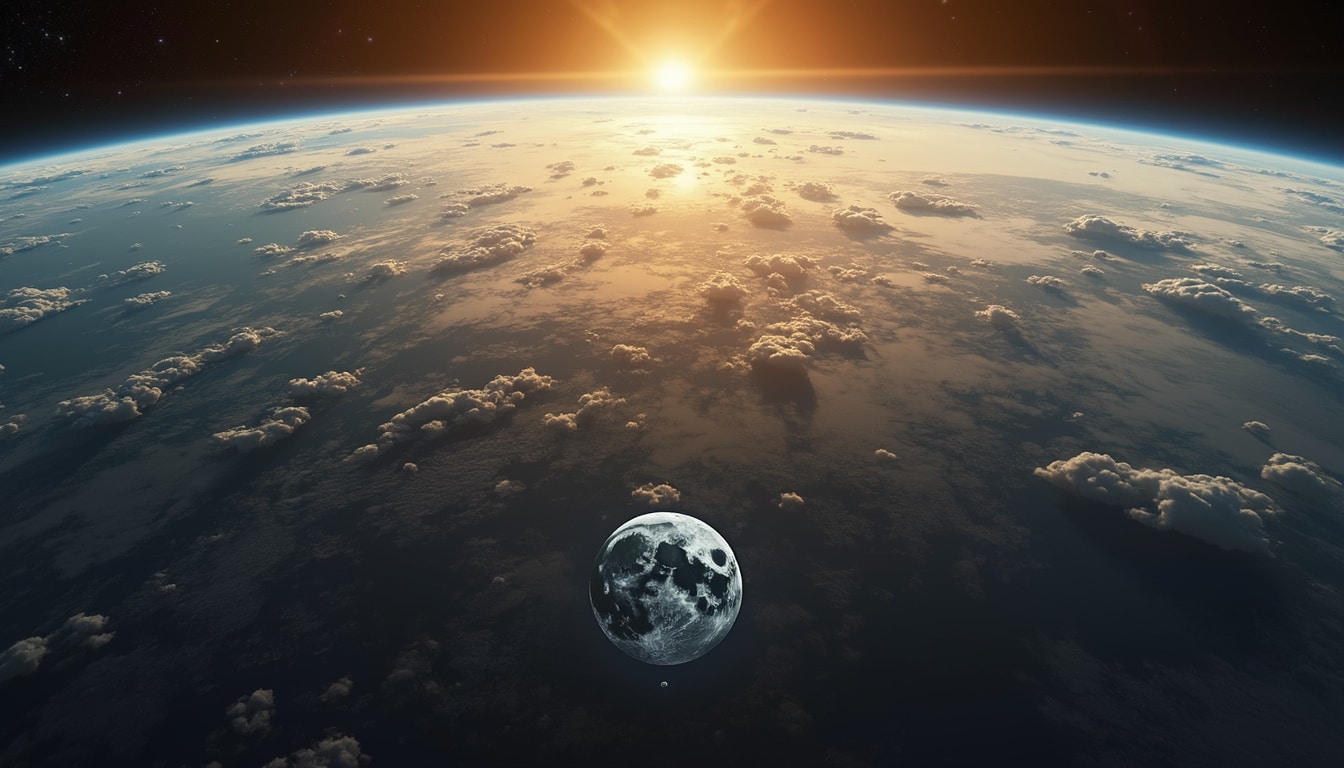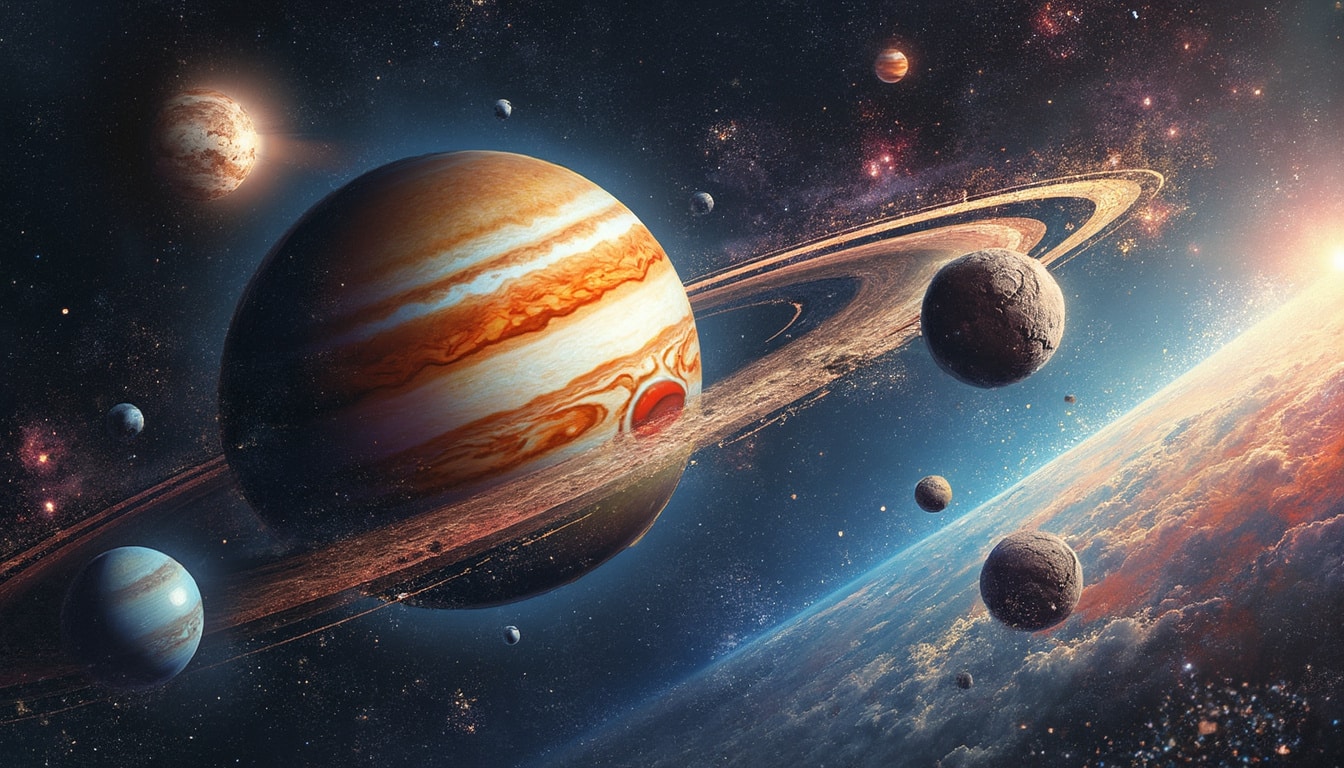Gazing up at the night sky has always ignited a sense of wonder in humanity. The twinkling stars, glowing planets, and mysterious moons offer a glimpse of the vastness of our universe. As scientific advancements continue to unfold, we learn more about our celestial neighbors, particularly how many moons they have. This exploration reveals not just numbers but also fascinating insights into the formation and characteristics of these moons, contributing to our understanding of solar system dynamics. In this article, we will delve into the individual planets of our solar system, examining the number of moons each possesses and uncovering some intriguing facts about them.
Understanding the Moon Counts
The question of which planets have moons and the exact count remains a captivating subject in astronomy. With some planets boasting dozens of moons, while others have none, it becomes essential to clarify why this happens. Let’s embark on an exploration starting from the innermost planet, Mercury, and proceeding outward to the majestic gas giants.

Mercury: The Moonless Marvel
Mercury, the smallest planet and closest to the Sun, holds a unique status in our solar neighborhood—it has no moons. The gravitational pull of the Sun is so powerful that any moon orbiting Mercury would likely be pulled away or crash into its surface over time.
This absence of moons makes Mercury resemble a giant moon itself, having a surface riddled with craters from meteor impacts. Astronomers often compare its barren landscape to that of the Moon, perhaps finding it a solace to a solitary existence near our blazing star.
The Mystery of Venus
Similarly, Venus is another enigmatic planet devoid of moons. The reasons behind this absence remain a point of interest in scientific circles. One theory posits that its proximity to the Sun hinders the planet’s ability to capture and retain a satellite in orbit. Any potential moon would face instability, mainly influenced by the Sun’s massive gravitational force.
Despite being our planet’s twin in size and composition, the lack of moons adds to the complexity surrounding Venus and continues to be a subject for further research.
Earth: Our Glorious Moon
Moving on to Earth, we proudly possess a single moon, aptly named ‘the Moon.’ Not only is it the fifth largest moon in the solar system, but it also plays a significant role in stabilizing our planet’s axial tilt. This stability is vital for maintaining the seasons and regulating our climate.
The Moon’s formation remains a tantalizing mystery, with the most accepted theory suggesting it resulted from a colossal impact between Earth and a Mars-sized body. This celestial artifact not only affects our tides but also captivates imagination and exploration, as seen in lunar missions over the decades.

Mars: The Twin Moons
Mars, known for its reddish hue, holds two moons: Phobos and Deimos. These small and irregularly shaped moons are remnants of asteroids captured by the planet’s gravitational pull. The larger of the two, Phobos, is unique as it always displays the same face toward Mars, mirroring the relationship between Earth and its Moon.
Both Martian moons are covered in dust, craters, and countless bumps, giving them a rugged appearance. Their origin and the future of their orbits continue to intrigue astronomers, as Phobos is gradually spiraling inward and will likely collide with Mars or break apart into a ring.
The Gas Giants: A Moons Abundance
As we move to the outer planets, we encounter the gas giants, a group renowned for their numerous moons. Among them, Jupiter stands as the planet with the largest count of known moons, boasting an impressive 80 confirmed moons. The International Astronomical Union has named 57 of these moons, while 23 await designation.
Galileo Galilei discovered the four largest moons of Jupiter in 1610, known as the Galilean moons—Io, Europa, Ganymede, and Callisto. Each of these moons carries its unique characteristics, with Ganymede holding the title for the largest moon in the solar system.

Saturn: The Ringed Giant’s Family
Saturn, famously recognized for its beautiful rings, has a staggering count of 146 moons, the highest number of any planet in our solar system. This count has evolved as new discoveries are made, with some moons still awaiting official recognition.
Among Saturn’s moons, Titan stands out due to its considerable size and dense atmosphere, making it an intriguing object of study for scientists. Titan is the only moon known to host stable bodies of liquid on its surface, adding to its enigmatic nature.
Uranus and Neptune: The Icy Giants
Continuing our journey, we reach Uranus, home to 27 moons, many of which have names inspired by literary figures, especially from Shakespeare’s works. Tritania, the largest, marks its existence since its discovery in 1787, allowing us a glimpse into the icy world.
Neptune, slightly further away, houses 14 moons. Triton, Neptune’s largest moon, is particularly fascinating as it orbits in the opposite direction of its planet’s rotation. This unusual characteristic suggests that Triton could have formed elsewhere in the solar system before being captured by Neptune’s gravity.

The Curious Case of Moons in Our Solar System
As we reflect on the number of moons, it becomes evident that a pattern exists based on the planet’s position in the solar system. Mercury and Venus entirely lack moons due to their proximity to the Sun, which prohibits stable orbits. Earth enjoys the companionship of its Moon, while Mars has two. The outer giants, especially Jupiter and Saturn, command the largest quantities of moons.
This variation raises intriguing questions about the dynamics of moon formation and retention in our solar system. Factors such as gravitational forces from the Sun, the gas giants’ considerable mass, and their ability to capture celestial bodies contribute to these diversities.

Understanding Moon Counts
There are a multitude of moons that lie just beyond the reach of our telescopes, many of which are small and barely noticeable. Yet, their existence adds further depth to our exploration.
NASA continually updates its moon count through ongoing research, ensuring that our understanding remains current. You can visit the NASA Solar System Exploration moons page to explore more about our moon companions.
The drive for knowledge continues as we strive to uncover the secrets of our universe, one moon at a time.




Leave a Reply